Sponsored by Wakasa Takahama Tourism Association
We’ve all heard of hotels and villas, and many of us have heard of ryokans, but what about minshukus? Well, if you consider a ryokan to be a Japanese-style hotel, then a minshuku is similar to a Japanese-style villa.
Run by families, and offering less rooms than most ryokans and hotels, staying in a minshuku is more of an intimate affair and provides a “homelier” feel. This type of accommodation is particularly popular in rural areas, and even more popular near the coast. And so, an ideal area for a minshuku is in Wakasa Takahama, a peaceful seaside town near Kyoto, which is where I will be reviewing two great minshukus: Tokiokaso and Wakashiso, as well as what to bring, general etiquette and what to expect.
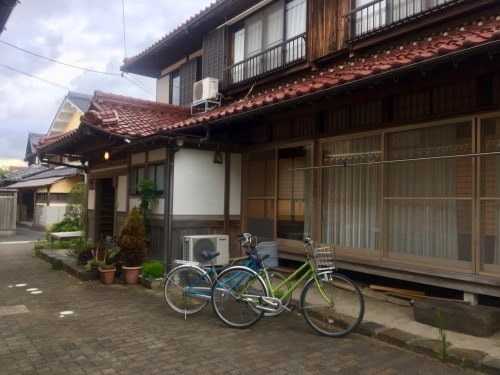
Etitquette at Minshuku
General
One of the biggest customs which shouldn’t be broken is – no shoes inside (except for slippers of course)! Outdoor shoes should be kept at the entrance. Both wakashiso and tokiokaso had slippers available for guests to use indoors, as well as clogs for outside. If your feet are on the larger side, you may find that your heels hang off the edge of the shoe – quite funny!
Inside the rooms noise should be kept to a minimum. Both minshukus had beautiful shoji (sliding doors), however they are not always the best at preventing noise. So it’s always best to be courteous and keep the TV on a lower volume. There was no official “lights-out” time at either minshuku, but as there were many young children staying there so people tended to rise and sleep early, quietening-down between 21:00-22:00, and waking up around 06:00.
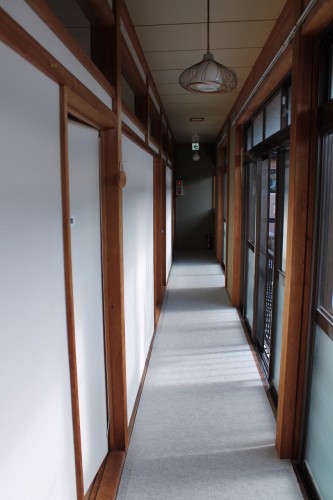
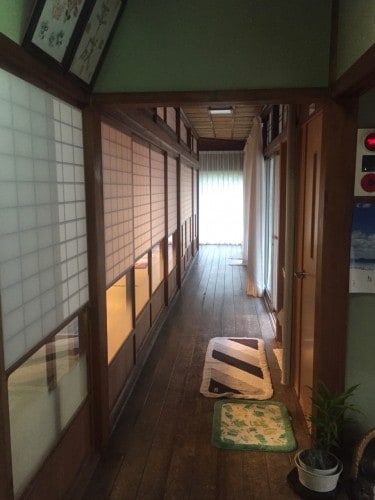
Bathing
As with ryokans, most minshukus have a public bathing area – gender separated of course! That being said, many minshukus, including both Wakashiso and Tokiokaso allowed you to maintain your privacy by having a lock and “do not disturb” sign respectively.
The bathing area usually consists of multiple showers, wash bowls, a stool and a bath.
An obvious etiquette for bathing publicly is to clean your bathing area both before and after use (hosing down with hot water). When english is not shown, female-only areas are indicated by ‘女’ and male-only areas are indicated by ‘男’.
Eating
Eating in the restaurant area at the minshuku is just like eating at any other restaurant in Japan! The general rules apply, such as don’t pass food between chopsticks, don’t keep chopsticks sticking out of your food etc.
At Wakashiso, the seating style was traditional Japanese (low table and tatami flooring) so you should cross your legs under the table (or just sit comfortably if not possible). Tokiokaso, on the other hand, had Western-style seating in the restaurant area, and then Japanese-style outside in the BBQ area.
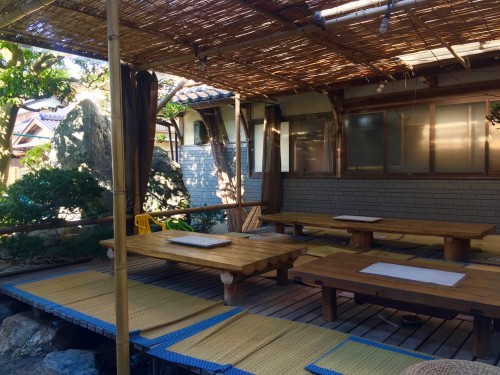
The Rooms
The rooms within both Wakashisou and Tokiokaso were similar. They comprised of: tatami flooring, futons, a low table, television, storage areas and a heating/cooling unit. These minshuku were also clearly set-up with beach visitors in mind, because both offered outdoor taps and drying areas for clothes. Being located in a residential area, the rooms were quiet with only the sound of crickets chirping around.
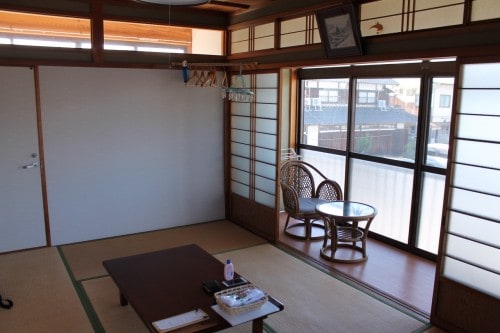
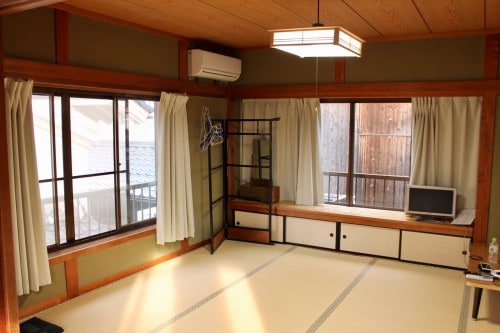
Local Cuisine in the Minshuku Restaurants
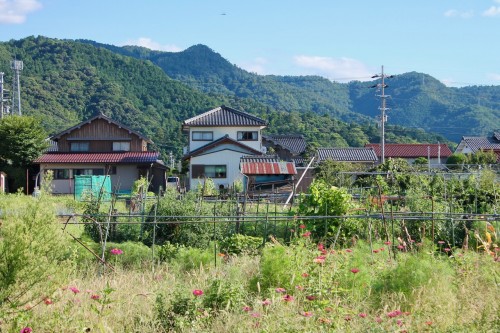
The Takahama area is renowned for its famous mackerel and fugu blowfish – meaning that you can enjoy some extremely tasty (and much cheaper) seafood here! Interestingly, the oldest account of sushi is even linked to the Takahama area, and a local delicacy here is mackerel sushi!
At ryokans and minshuku alike, dinner is usually served early – around 18:00-19:30, and breakfast is usually served between 08:00-09:00. However, at both Wakashiso and Tokiokaso we were asked when we would like to eat which was so convenient because we had fixed plans over the next few days.
Dinner
The seafood available at both minshukus was extraordinary. Fresh, light and tasty! Wakashishou’s dinner was focused around a lightly battered blowfish, whereas the star of the show at Tokiokaso, was the sashimi seafood platter! Honestly, we did struggle to finish the meal at Tokiokaso but I think that was because we had eaten quite a substantial lunch!
One thing that that I found noticeably different about eating dinner in a minshuku restaurant, in comparison to a ryokan, is that the atmosphere during dinner was much more relaxed. Dinner is served – with self-serve drinks and rice – and then you are left to enjoy your meal undisturbed. I prefer to help myself and feel at home somewhere, so I actually prefer this vibe.
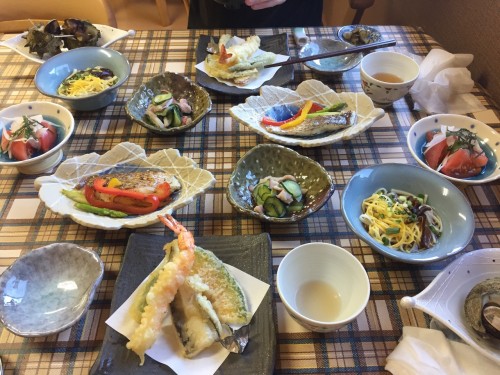
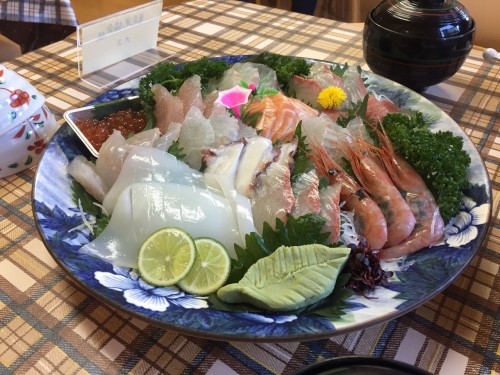
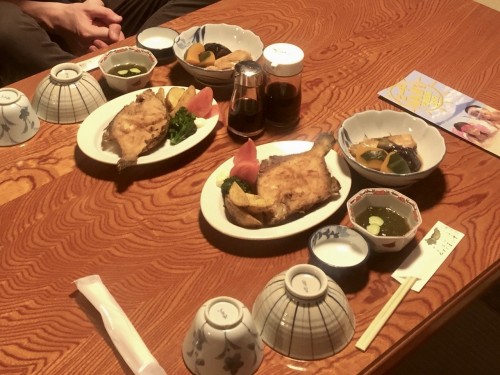
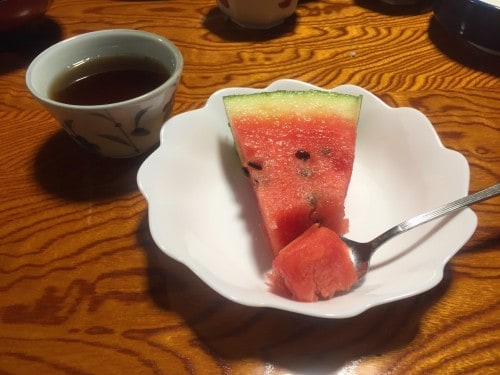
Breakfast
Both ryokans served a traditional Japanese breakfast of salmon, sticky rice with nori (seaweed), ocha (tea) and tamago (egg), fresh vegetables and miso soup. The breakfasts were both pretty filling, especially after the huge dinners the night before!
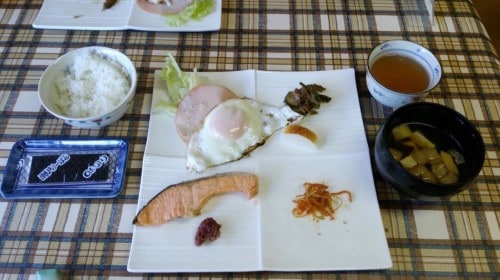
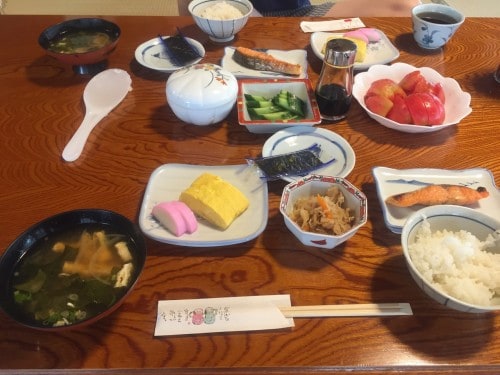
What to Bring
Here are a few of my specific recommendations:
- Toiletries, namely hair conditioner, body moisturiser, toothbrush and toothpaste. Shampoo and shower gel is almost always available.
- Towels
- Eye mask – the sun rises really early in Japan and many minshukus allow most of the light to pass through into the room.
- Ear plugs – minshukus are popular with families. Ear plugs are always good in case a baby is struggling to sleep.
How Much Does it Cost to Stay in a Minshuku?
Prices vary from place to place but most minshukus cost around 5,000 yen-7,000 per person per night and usually include breakfast and/or dinner. The fee for children (小人) is usually less than adults (大人), and there may be a slight surcharge on Sundays or during the holidays. Ryokans in comparison, can cost around two to three times the price.
Bookings and Enquiries
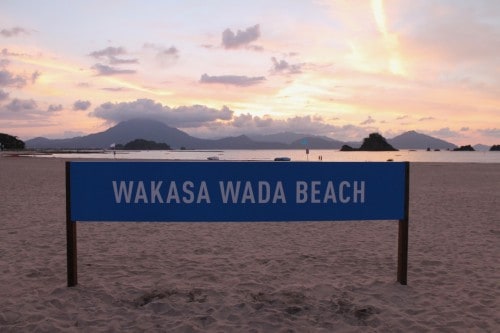
There are numerous ryokans, hotels, villas and minshuku located around Wakasa Takahama but many of them don’t have their own websites. The best way to make a reservation, or to ask for more information is to contact the Wakasa Takahama Tourist Association by e-mailing info@wakasa-takahama.jp or visiting their site for accommodation here.
Access
I’ve done another post all about how to get to Wakasa Takahama from Kyoto, Osaka, Kanazawa and Tokyo, for full info, please check that out! If you are a foreign visitor to Japan, it may be worth getting a JR Pass (Japan Rail Pass) for your Japanese expedition! If you are planning to travel from Tokyo, then a JR Pass would cover your cost to and from Wakasa Takahama, and then some!

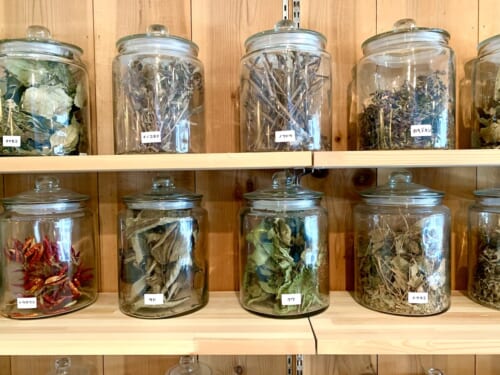
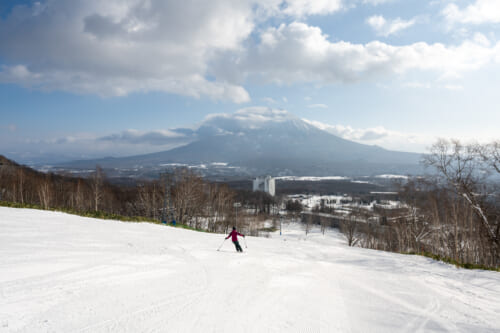
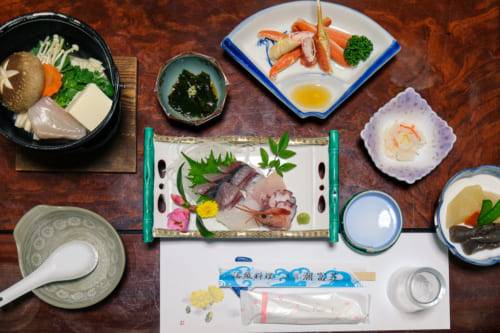
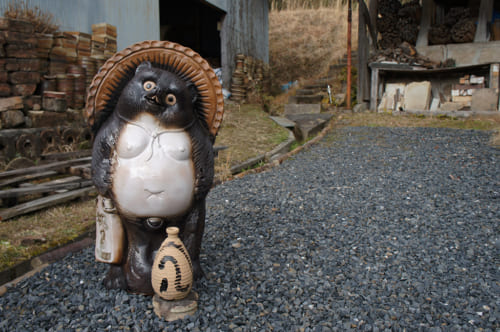
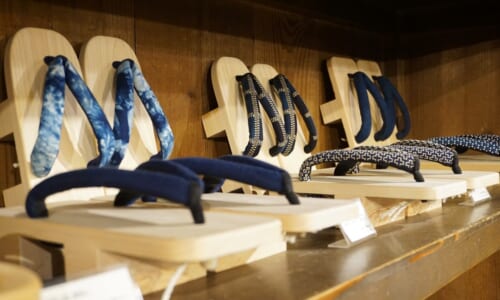
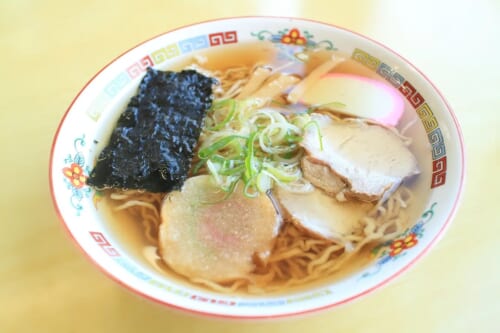
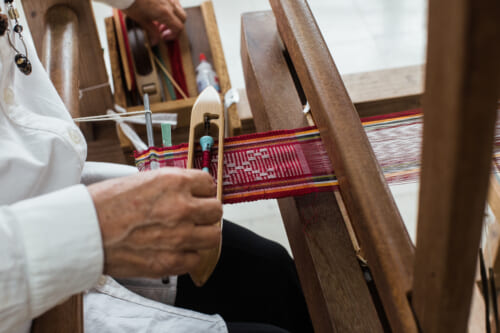


No Comments yet!